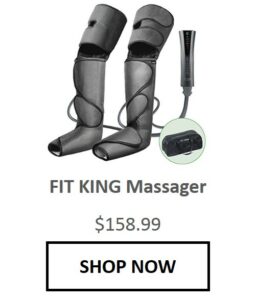
31 Aug How To Use Running To Build Power 5x Faster In Your Legs
If you are a runner, strength training should be part of your training routine -yes, this is rule #1. Not only this allows to build and maintain the muscle tone necessary to help you perform well, but also reduces your risk of injuries.
Every time we talk about strength training we think about gym day.
Yes, gym day should be in the agenda of any runner -at least once a week.
And still, If time is a limitation, a session at home with a portable device such as the Bodyboss should be done -at a minimum.
But what if you could actually ‘use’ running as a strength training routine? Yes, done in a way that helps build muscle and power, faster.
This is not to say that you should erase gym day from the agenda (because you should not), but boosting your running days in a way that you also get to build power and muscle.
And yes, there is one way to do this: using HIIT as part of your training routine.
In fact, I was able to build muscle and power 5x faster after incorporating HIIT as part of my training.
Did I skip gym days? no. I simply amplified the outcome of my running days with regards to muscle tone and power.
And believe me, HIIT training can get you results 5x faster in case building muscle and power is the goal.
Whether you are new to High Intensity Interval Training (HIIT) or not, let’s quickly review what it is and how it can help you boost muscle and power.
HIIT training
HIIT is a form of training that uses short periods of intense activity alternated with less intense recovery periods between them. This way your work harder, in a shorter period. Overall, HIIT provides a robust foundation for cardiovascular improvement, fat reduction, and muscular improvement.
How HIIT impacts your body
Some studies have determined that HIIT can improve your muscles’ ability to use and consume oxygen. HIIT requires higher strikes from the muscles in every movement and this creates additional blood flow in the muscle allowing it to work more efficiently and get better and faster results.
The key of HIIT routines in developing more and faster power is that muscles will contract faster and more powerfully with each stride, engaging the key muscles and the fast twitch fibers of your lower body so they respond faster and develop stronger.
How HIIT should be done
Depending on the type of training, HIIT is typically done in less than 15-20 minutes. A common practice is using from 20 up to 60 seconds of continuous intense activity (at 90% up to 150% VO2max) followed by 15-30 seconds of rest, then intense activity again for a total of 3-6 sets, depending on the regime, or the combination of regimes.
A good routine for runners (1x or 2x week) can include a set of 200 mts fast runs with 30 seconds rest period between them. Repeat 5 times. This can be done at 80%-90% VO2max. After 3 weeks of work, you will feel the effects of HIIT training.
Do’s and Don’ts of HIIT Training
- If you are not an active runner, or your physical activity is low, consult your physician before starting any HIIT routine
- Don’t skip the warm ups. HIIT will demand shorter but stronger muscle strikes, make sure your elasticity is good so the muscle does not break on these higher demands. An elastic muscle will withstand better HIIT routines
- HIIT should be part of your training, and not your training
- Make sure your carbs are loaded before the session. HIIT will ‘eat’ more and faster than regular training. Your muscles will demand more carbs for energy production, so make sure they have enough
- Don’t go too long on the intense intervals. This is obvious, as your muscles are at full capacity, taking it to the extreme will end up in injury, faster
- Don’t rest for too long neither. Don’t let muscles cool down between intervals. Just enough so they can respond to the next set.
- HIIT stands for High Intensity. How much load and intensity are you putting? If you are doing HIIT, it means you are at, or close to max capacity. If you don’t see results, maybe you are not doing HIIT
Enjoy your runs, train smart, and watch your nutrition.
We hope this post was helpful to you. If you have a comment we’d love to hear from you.
Running Essentials




Sorry, the comment form is closed at this time.